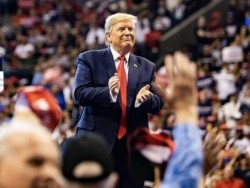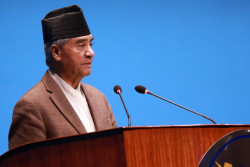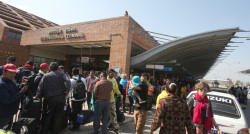Opinion
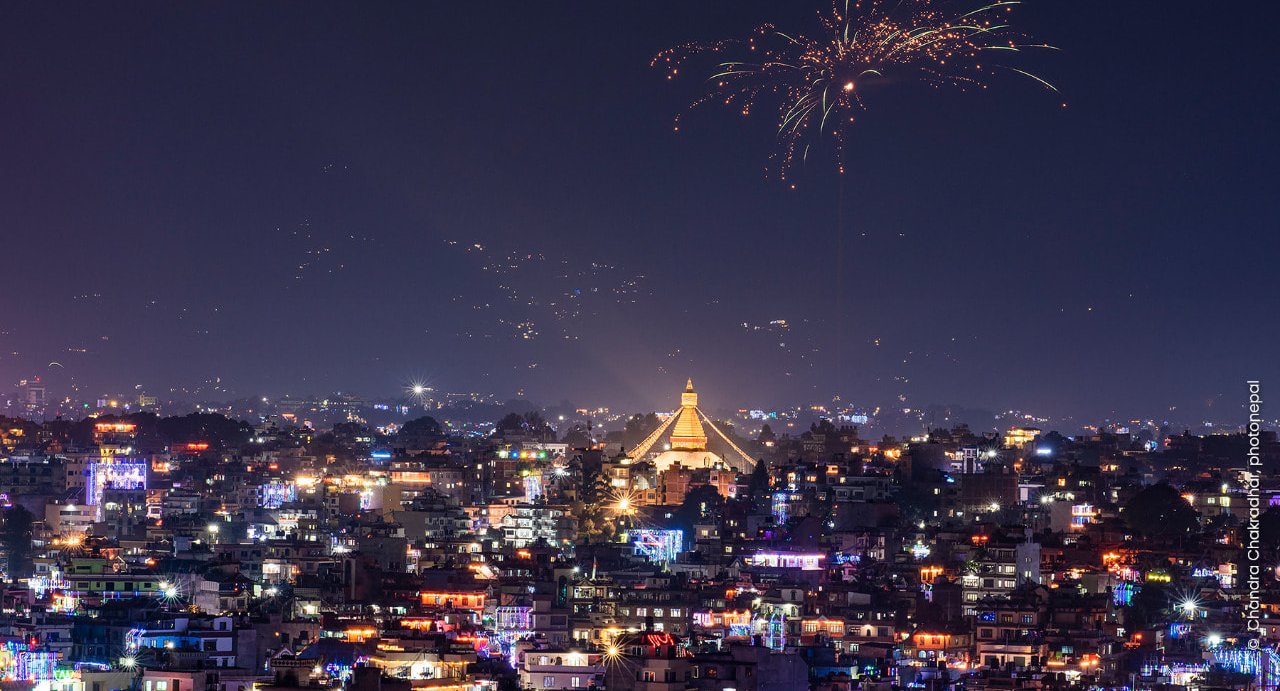
By Karen Tsafrir
The word Nepal is aptly named. It's made up of two names, Ne meaning middle and Pal meaning country. The Terai area in green and yellow is a rich, fertile and ancient land which lies in the southern parts of Nepal on her border with India. Around 13,000,000 people live there, a mix of various tribes, ethnic groups and castes.
The middle part of the country in orange on the map is hilly with chilly winters. The days are mild and sunny but the nights are freezing. Kathmandu lies more or less in the middle of the middle area in a hilly valley called Kathmandu valley. The valley is surrounded by mountains and many of the mountains have picturesque monasteries perched on the peaks.
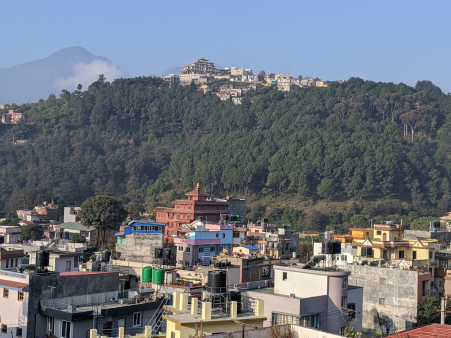
The mountainous region is called Parbat and is home to the Himalayas. The Upper Himalaya ranges from 4,000m above sea level to 8,848m above sea level. It occupies 15 per cent of the total area of the country and within this region lie eight of the fourteen highest peaks in the world exceeding 8000m. If you haven't seen the series 14 peaks watch it.
In the mountain region with its harsh living conditions, there are many polyandrous marriages with women having three husbands or more. I've been asking myself if that is something I would want. It has a certain appeal.
So Nepal has never been occupied or colonised even though the British colonised India just next door and China on the northern borders were partially colonised by both Germany and Great Britain. It was King Prithvi Narayan of Gorkha (correctly referred to as Mahārājdhirāja or Great King of Kings) a forward-thinking kind of bloke and statesman who united the various kingdoms of Nepal in 1768. He decided to move his capital to Kathmandu establishing the Shah dynasty which ruled unified Nepal from 1769 to 2008. He was a powerful leader but following his reign the monarchy became mostly figurehead and was ruled by hereditary prime ministers of the Rana dynasty.
King Prithvi Narayan Shah ruled for 31 years. Nepal had altogether 14 kings before the monarchy was dismantled and it became a republic. The infamous King Dipendra Bir Bikram Shah Dev who reigned in theory for just three days (he was in a coma throughout) from 1 to 4 June 2001 has a shocking story. He was in a coma after he shot his father, King Birendra, his mother, Queen Aishwarya, his younger brother and sister, and other members of the royal family, altogether nine people, before turning the gun on himself in an event known as the Nepalese royal massacre.
To this day no one knows his motive for the murders, but there are various theories. Dipendra wanted to marry the lovely Devyani Rana, the daughter of an Indian royal family whom he had met in England, but due to her family's lower caste and her father's political alliances, Dipendra's parents objected; he was told that he would have to give up his claim to the throne in order to marry her. (The British part of me understands that, not every king will step down for love) Other theories allege that he was unhappy with the country's shift from an absolute to a constitutional monarchy, honestly I can't see how either motives explain murdering your entire family.
The pastel coloured houses of the people of Kathmandu that I saw from the sky are just as colourful from below. It reminds me a bit of Jaipur, Udaipur, Jodhpur and Jaisalmeer all mixed up. It's a hickledy pickledy jumble of style and colour, a mix of crooked houses built on hills so close to each other you just need to lean out of your window to shake your neighbour's hands.
The people of Kathmandu are quiet spoken and even though the houses are almost on top of each other in Lalitpur where I am staying the days are still and serene. I wake hearing the gentle cooing of pigeons on the balconies and the hurried flutter of wings as they soar high above the rooftops. Then I hear the hissing of pressure cookers in all directions as people prepare their rice for breakfast. Each pressure cooker hissing at a different time and coming together to make a perfect symphony of hissing. A rhythmic symphony, the hissing at different pitches and some emitting just a short hiss whilst other proudly letting out a long impressive one.
On the streets of Lalitpur a carpet salesman is selling his wares. Shouting in Nepalese a string of words but I can't distinguish where a word begins or ends. I heard his call before I saw him struggling up the hill. His sales call mixed with grunts from the effort of carrying the red green and yellow carpets balanced on a thick stick on his back.
The roads are bumpy and pockmarked and the impatient mopeds, so popular both here and in India, zigzag precariously between the cars leaving sandstorms in their tracks.
The ancient temples and palaces took a terrible beating on April 25, 2015, with a 7.8 earthquake on the Richter scale, many are still in rubble.
My first stop on my first morning here was to Durbar Square. It is, I was told by my guide a marvel of Newar architecture. (The Newars were the original inhabitants of the valley) There are so many temples and statues in the area. I can't begin to describe them. I did love the MIS of styles with some temples built Pakoda style and others more Indian.
All the temples face the wall of the palace and all their entrances face the palace making it easy for the king to pop in whenever he felt like it, which was apparently many times a day.
It was here that I learned that the gods had vehicles of transport you can see how they got around if you look at their feet.
I learned in a blurr about all the gods of Nepal. Fascinating and complicated are the any gods of Nepal. The nations temples were mainly built by the Newari whose religious background was a blend of Hinduism and Buddhism all jumbled up. And Budha was just a Hindu practicing man before he became a deity. And all this further complicated by the fact that many gods have many reincarnations with different names.
This is my favourite goddess, Tara. Firstly I can pronounce her name (not a given around here) and secondly she has five extra eyes on the palms of her hands and feet and obviously one in the middle of her forehead. Something every mother to young children could do with.
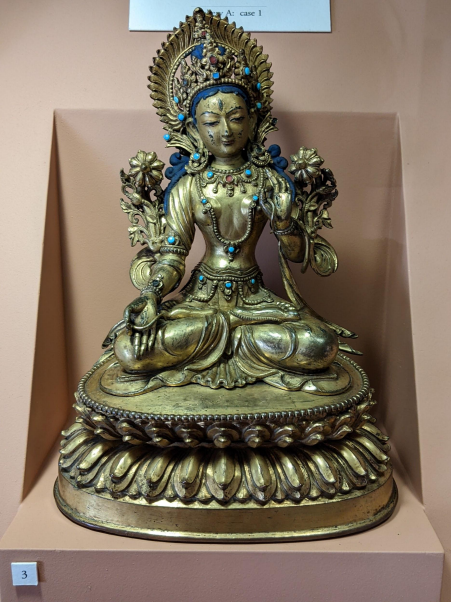
I visited SIX other temples that day all beautiful with amazing architecture. I loved the King's bath and am thinking about installing one just like it in my garden.
There used to be over 300 public baths/ fountains around Katmandu. The Dhungedhara or Hiti, are rarely in use nowadays but I managed to capture a bloke just at the end of his shower.
The challenge of the day was climbing 378 exceedingly steep steps to the Monkey temple in Syambhunath. I didn't want to look like I needed to catch my breath so I made frequent stops to take pics of monkeys.
The temple is the most holy Buddhist site in Nepal and the stupa a weirdly shaped round building standing at the top.
You actually don't go in to pray, as you would in monotheistic houses of prayer, there is no way in but you walk around it,
In the Golden Temple I stopped to roll the prayer wheels clockwise as I walked reciting the mantra Om mani pembeh hoom. It's an ancient Sanskrit mantra, meaning something like There are jewels inside the lotus flower that bring happiness and compassion and purity. Hope I got this right. The Dalai Lama explains it better than I do.
On day 2, I managed to squeeze in a bit more sight seeing with the lovely Ashrita, my host's niece. Her name means independent and she is a force not to be messed with, definitely living up to her name.
We travelled out to the hills to a Newari more agricultural part of Kathmandu, to Karayabinayak. The roads there were bumpy and dusty but the journey was worth it.
There too the temple was still showing damage from the earthquake but the long scary swinging bridge was charming as were the kids on it.
Alas the rest of my Kathmandu exploring was abruptly cut short by the sudden and exceedingly painful onset of acute Sinusitis but that's a story for another day.
Karen Tsafrir is the owner of Live Production Event Production company based in Israel. She says she is a romantic, a dreamer, a great listener, a compulsive researcher, passionate planner, kindle addict, spinning instructor, foodie, closet poet and a world traveler.
